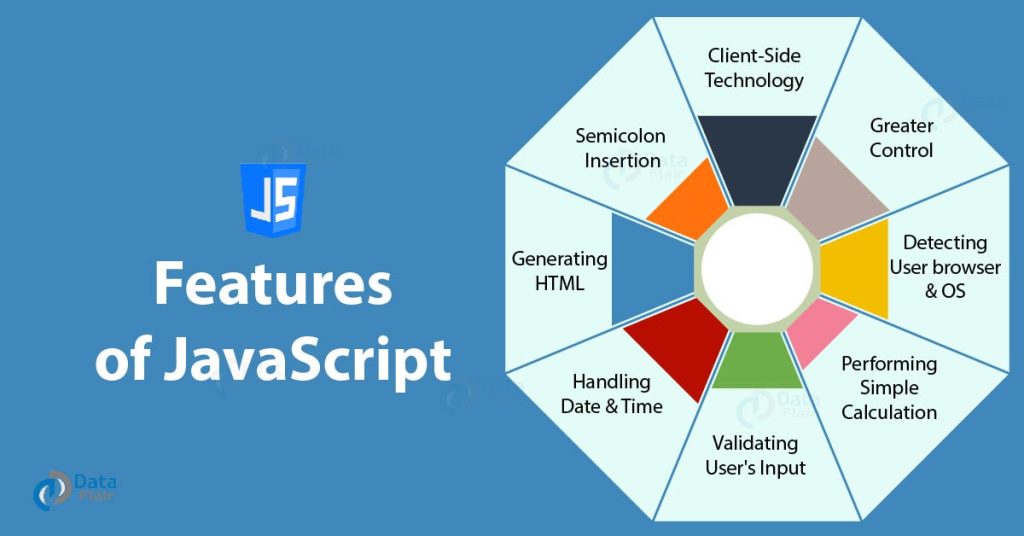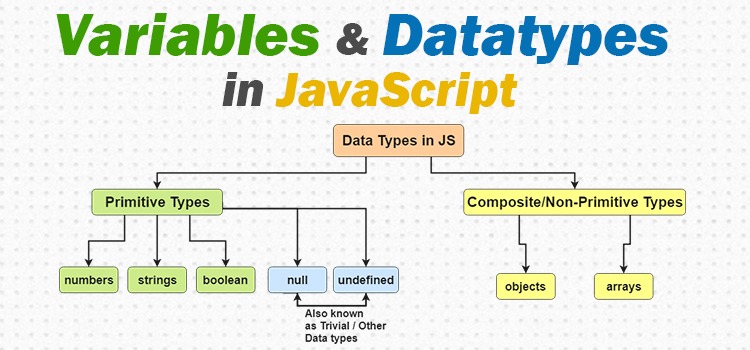
IT Project On JavaScript For Class 11th
Acknowledgment
I would like to express my sincere gratitude to all those who have contributed to the completion of this IT project on JavaScript, titled “Interactive Quiz Application.” Firstly, I extend my heartfelt thanks to [Teacher’s Name], whose guidance and support have been invaluable throughout the development process. Their expertise and encouragement have played a pivotal role in shaping this project.
I am also thankful for the unwavering support from my classmates who provided constructive feedback and engaged in insightful discussions, enhancing the overall quality of the project. Additionally, appreciation goes to [Any Other Contributors or Collaborators], whose collaboration added diverse perspectives and enriched the project.
Furthermore, I want to acknowledge the resources available online and offline that have been instrumental in expanding my knowledge of HTML, CSS, and JavaScript, enabling me to bring this project to fruition.
Lastly, I extend my deepest appreciation to my family and friends for their patience, encouragement, and understanding during the project’s development. Their support has been a constant source of motivation.
This project has been a rewarding learning experience, and I am grateful for the collective efforts that have contributed to its successful completion.
Introduction
In the dynamic landscape of modern technology, the realm of web development stands as a cornerstone, and at the heart of this domain lies the powerful trio of HTML, CSS, and JavaScript. It is within this context that we embark on a journey into the creation of an innovative IT project — the “Interactive Quiz Application.” This project represents a culmination of our exploration into the intricacies of JavaScript, a language that has become synonymous with the interactivity and responsiveness that define contemporary web applications. The “Interactive Quiz Application” is designed to showcase the practical application of JavaScript in the development of a user-friendly and engaging quiz platform. As we delve into the project, we will witness how JavaScript seamlessly integrates with HTML and CSS to breathe life into static web pages, offering a dynamic and interactive user experience. This project not only serves as a testament to our understanding of JavaScript’s core concepts but also as a practical demonstration of its ability to enhance the functionality and user interface of a web application.
Understanding JavaScript is pivotal in the realm of web development, as it empowers developers to create feature-rich, client-side applications. Through the lens of our project, we aim to highlight the importance of JavaScript in crafting interactive elements, handling user input, and dynamically updating content without the need for constant server communication. As we navigate through the development process, our primary objectives include mastering JavaScript’s syntax and structure, implementing logic for quiz functionalities, and ensuring a seamless user experience. This project is not merely a collection of code; it is a manifestation of our journey to comprehend and wield the power of JavaScript in crafting real-world solutions. In this endeavor, we embrace the challenges and rewards that come with developing an application that goes beyond the theoretical constructs of a classroom setting. Join us as we unlock the potential of JavaScript and witness the transformation of static web pages into an engaging and interactive quiz platform.

Features Of JavaScript
Certainly! JavaScript is a powerful and versatile programming language that offers a wide range of features. Here are some key features of JavaScript:
- Cross-Platform Compatibility: JavaScript is supported by all major web browsers, making it a cross-platform language that can run on various operating systems.
- Interactivity: JavaScript enables the creation of interactive and dynamic elements on web pages, enhancing the user experience by allowing real-time updates and responses.
- Client-Side Scripting: Primarily used for client-side scripting, JavaScript is executed on the user’s browser, reducing the load on the server and enabling dynamic content manipulation.
- Asynchronous Programming: JavaScript supports asynchronous programming paradigms, allowing non-blocking code execution and efficient handling of operations that may take time, such as fetching data or processing user input.
- Event-Driven Programming: JavaScript is inherently event-driven, responding to user actions like clicks, keypresses, and form submissions. This makes it well-suited for creating interactive and responsive user interfaces.
- Object-Oriented Programming (OOP): JavaScript supports object-oriented programming principles, including the creation of objects, encapsulation, inheritance, and polymorphism.
- Dynamic Typing: JavaScript is dynamically typed, allowing developers to work with variables without explicitly declaring their types. This flexibility simplifies coding but requires careful handling to avoid unexpected behaviors.
- Versatility: JavaScript is a multi-paradigm language, supporting procedural, object-oriented, and functional programming styles. This versatility allows developers to choose the approach that best fits their needs.
- DOM Manipulation: JavaScript interacts with the Document Object Model (DOM) to dynamically modify the structure, content, and style of HTML documents, enabling real-time updates without page reloads.
- Extensibility: JavaScript can be extended through the use of libraries and frameworks, such as jQuery, React, and Angular, which provide additional functionalities and simplify complex tasks.
- Server-Side Development: With the introduction of Node.js, JavaScript can now be used for server-side development, allowing developers to use a single language for both client and server-side tasks.
- Community and Ecosystem: JavaScript has a vast and active developer community, contributing to an extensive ecosystem of libraries, frameworks, and tools. This rich ecosystem facilitates efficient development and problem-solving.
- Security: While security is a consideration, JavaScript has features and practices in place to help mitigate security risks, such as the Same-Origin Policy to prevent cross-site scripting attacks.
- Regular Expressions: JavaScript supports powerful regular expressions, allowing developers to perform complex string manipulation and pattern matching.
- Debugging Support: Browsers and development tools provide robust debugging capabilities, including breakpoints, step-through execution, and error logging, facilitating the identification and resolution of issues.
These features collectively contribute to JavaScript’s popularity and effectiveness as a programming language for web development and beyond.

Types Of JavaScript
JavaScript is a versatile programming language that can be categorized into different types based on its use and context. Here are some common types of JavaScript:
- Client-Side JavaScript: Executed on the client’s browser, primarily used for enhancing user interfaces and creating dynamic web pages. Form validation, interactive elements, and dynamic content updates without reloading the page.
- Server-Side JavaScript: Executed on the server, often used in backend development for tasks like handling requests, interacting with databases, and server-side logic. Node.js is a popular runtime environment for server-side JavaScript.
- Embedded JavaScript (EJS): A templating language that allows embedding JavaScript code within HTML. Generating dynamic HTML content on the server side, often used with Node.js.
- Object-Oriented JavaScript: Utilizes JavaScript’s object-oriented programming (OOP) features, including classes and inheritance. Creating modular and reusable code, particularly useful for larger applications.
- Prototype-Based JavaScript: JavaScript uses prototypes for inheritance rather than traditional class-based inheritance. Creating objects and defining their properties and methods through prototypes.
- Asynchronous JavaScript: Utilizes asynchronous programming features, such as callbacks, promises, and async/await, to handle operations that may take time, like fetching data or handling user events. Improving application responsiveness by avoiding blocking operations.
- Functional JavaScript: Emphasizes the use of functions as first-class citizens, allowing for functional programming paradigms like higher-order functions and pure functions. Writing clean, modular, and easily testable code.
- Dynamic Typing: JavaScript is dynamically typed, meaning variable types are determined at runtime. Flexibility in coding, but requires careful handling of variable types to avoid unexpected behaviors.
- Client-Side Frameworks/Libraries: JavaScript frameworks and libraries designed to simplify and streamline client-side development. React.js, Angular, Vue.js.
- Game Development JavaScript: JavaScript can be used for creating interactive games in the browser. Browser-based games, game engines like Phaser.js.
- Mobile App Development: With frameworks like React Native and technologies like Apache Cordova, JavaScript is used for building cross-platform mobile applications. Developing mobile apps for iOS and Android.
Understanding these types of JavaScript allows developers to choose the right approach based on the requirements of their projects, whether it’s creating dynamic web pages, server-side logic, or building complex applications.

Uses Of JavaScript
JavaScript is a versatile programming language that finds applications in various domains, particularly in web development. Here are some common uses of JavaScript:
- Web Development: JavaScript is a core technology for creating dynamic and interactive web pages. It enhances the user experience by allowing real-time updates, form validation, and the manipulation of HTML and CSS on the client side.
- Front-End Frameworks and Libraries: JavaScript is extensively used with front-end frameworks and libraries like React.js, Angular, and Vue.js to build sophisticated user interfaces, manage state, and create single-page applications (SPAs).
- Server-Side Development: With the advent of Node.js, JavaScript can now be used for server-side development, allowing developers to use a single language for both client and server-side tasks.
- Mobile App Development: JavaScript, along with frameworks like React Native and Apache Cordova, is employed to develop cross-platform mobile applications for both iOS and Android platforms.
- Game Development: JavaScript, in conjunction with game development libraries like Phaser.js, is used to create browser-based games and interactive multimedia content.
- Browser Extensions: JavaScript is commonly used to develop extensions and add-ons for web browsers, enhancing browser functionalities and providing additional features to users.
- Interactive Web Forms: JavaScript enables the creation of interactive and responsive web forms, facilitating user input validation, real-time feedback, and dynamic form behavior.
- Web APIs (Application Programming Interfaces): JavaScript is used to interact with various web APIs, enabling developers to integrate third-party services, access data, and create mashups.
- AJAX (Asynchronous JavaScript and XML): JavaScript, in combination with AJAX, allows asynchronous communication with a server, enabling the dynamic updating of content on web pages without requiring a full page reload.
- Content Management Systems (CMS): JavaScript is employed in the development of CMS themes and plugins to enhance the functionality and interactivity of content-driven websites.
- Web Animation: JavaScript is used to create animated elements on web pages, improving visual appeal and user engagement.
- Data Visualization: JavaScript libraries like D3.js are used to create interactive data visualizations, charts, and graphs on web pages.
- Chatbots and Virtual Assistants: JavaScript is utilized to create interactive chatbots and virtual assistants on websites, providing users with personalized assistance and information.
- Geolocation Services: JavaScript is employed to access the geolocation API, allowing web applications to retrieve and utilize a user’s geographical location.
- Browser Games and Simulations: JavaScript is commonly used to develop small browser-based games and simulations, offering interactive and engaging experiences directly within web browsers.
These diverse applications showcase the broad utility of JavaScript across various domains, making it a fundamental language for modern web development and beyond.

Advantages Of JavaScript
Certainly! JavaScript offers several advantages that contribute to its widespread use in web development and beyond. Here are some key advantages of JavaScript:
- Client-Side Interactivity: JavaScript allows for the creation of dynamic and interactive user interfaces on the client side, enhancing the overall user experience.
- Ease of Learning: JavaScript has a relatively simple syntax, making it accessible for beginners and allowing for rapid development.
- Versatility: JavaScript supports multiple programming paradigms, including procedural, object-oriented, and functional programming, providing flexibility to developers.
- Rich Ecosystem: JavaScript has a vast ecosystem of libraries, frameworks, and tools (e.g., React, Angular, Vue) that streamline development and provide solutions for various tasks.
- Cross-Browser Compatibility: JavaScript is supported by all major web browsers, ensuring consistent behavior across different platforms and browsers.
- Asynchronous Programming: JavaScript’s support for asynchronous programming allows for non-blocking code execution, leading to improved performance and responsiveness in web applications.
- Server-Side Development (Node.js):With Node.js, JavaScript can be used for server-side development, enabling developers to use a single language for both client and server-side tasks.
- Community Support: JavaScript has a large and active developer community, providing support, documentation, and a wealth of resources for developers.
- Immediate Feedback: JavaScript enables immediate feedback to users, enhancing the user experience by providing real-time validation and updates.
- Interoperability: JavaScript can be easily integrated with other languages, allowing for interoperability and seamless communication between different components of a system.
- Scalability: JavaScript is scalable and can be used for both small-scale projects and large-scale applications, making it suitable for a wide range of development scenarios.
- Frequent Updates: JavaScript specifications are regularly updated (e.g., ECMAScript updates), introducing new features and improvements to the language.
- Support for Web APIs: JavaScript is used to interact with various web APIs, allowing developers to integrate third-party services and access data from external sources.
- Fast Development Cycle: JavaScript’s interpreted nature enables a fast development cycle, allowing developers to see immediate results and iterate quickly.
- Compatibility with HTML and CSS: JavaScript seamlessly integrates with HTML and CSS, providing a cohesive environment for building modern and interactive web applications.
These advantages collectively contribute to JavaScript’s popularity and its status as a fundamental language for web development and a growing range of applications beyond the web.
Disadvantages Of JavaScript
While JavaScript offers numerous advantages, it also has some disadvantages that developers need to consider. Here are some of the key disadvantages of JavaScript:
- Client-Side Security: Because JavaScript code is executed on the client side, it can be susceptible to security issues like cross-site scripting (XSS) attacks if not handled properly.
- Browser Support Variability: Different browsers may interpret JavaScript code differently, leading to potential compatibility issues. Developers often need to write additional code or use libraries to address these variations.
- Single-Threaded Execution: JavaScript is single-threaded, meaning it can only execute one task at a time. This can lead to performance bottlenecks, especially when handling resource-intensive tasks.
- Limited Storage: JavaScript has limited storage capabilities compared to other programming languages. This can pose challenges when dealing with large datasets or complex applications.
- No Multithreading: JavaScript lacks native support for multithreading, making it challenging to perform multiple tasks simultaneously. This limitation can impact the performance of certain applications.
- Interpretation Over Compilation: JavaScript is an interpreted language, which means that it is executed line by line. This can result in slower execution compared to languages that are compiled.
- Dependency on Third-Party Libraries: Developers often rely on third-party libraries and frameworks to overcome certain limitations in JavaScript. However, this can introduce additional complexities, dependencies, and potential security risks.
- Callback Hell (Callback Pyramids): Asynchronous programming using callbacks can lead to nested and complex structures known as “callback hell” or “callback pyramids,” making the code difficult to read and maintain.
- Global Namespace Pollution: JavaScript uses a global namespace, which can lead to naming conflicts between different scripts. This may result in unintended variable or function overwrites, causing unexpected behavior.
- Lack of Static Typing: JavaScript is dynamically typed, which means variable types are determined at runtime. This lack of static typing can lead to potential runtime errors that might not be caught until execution.
- Limited Control Over Hardware Resources: JavaScript, being a client-side language, has limited access to hardware resources compared to server-side languages. This restriction can impact certain types of applications, such as resource-intensive games or simulations.
- SEO Challenges for Single-Page Applications (SPAs): Search engine optimization (SEO) for SPAs built with JavaScript can be challenging because search engines may struggle to index content rendered dynamically.
- Execution Speed: While modern JavaScript engines have significantly improved performance, certain computationally intensive tasks may still be faster in languages like C++ or Java.
- No Multithreading Support: JavaScript lacks native support for multithreading, which can limit its ability to efficiently handle concurrent tasks.
- Memory Leaks: Improper memory management can lead to memory leaks in JavaScript applications, especially in long-running processes or applications that rely heavily on dynamic memory allocation.
Despite these disadvantages, JavaScript remains a widely used and essential language, and many of these challenges can be addressed through best practices, careful coding, and the use of appropriate tools and frameworks.
Conclusion
In conclusion, JavaScript stands as a pivotal language in the realm of web development, offering a potent blend of versatility and interactivity. As we have explored its myriad advantages, such as client-side dynamism, ease of learning, and a vibrant ecosystem, it becomes evident that JavaScript plays a central role in shaping modern digital experiences.
However, the language is not without its challenges. From security concerns on the client side to the intricacies of asynchronous programming, JavaScript demands a thoughtful approach to harness its power effectively. The trade-offs, such as browser compatibility nuances and potential performance bottlenecks, underscore the importance of strategic decision-making in its implementation.
While acknowledging the disadvantages, it is crucial to recognize that JavaScript’s continuous evolution, coupled with an engaged developer community, actively addresses many of these challenges. New features, frameworks, and tools consistently enhance its capabilities, making JavaScript a dynamic force in the ever-evolving landscape of technology.
In the grand tapestry of web development, JavaScript serves not only as a language but as a catalyst for innovation. Its applications extend beyond traditional web development, penetrating mobile app development, game design, and server-side scripting through the advent of Node.js. As we navigate the digital frontier, JavaScript remains an indispensable tool, enabling developers to craft interactive, user-centric, and feature-rich applications.
In essence, the advantages of JavaScript far outweigh its drawbacks, and its continued relevance and adaptability ensure its place as a cornerstone in the toolkit of every modern developer. With a deep understanding of its strengths and a proactive approach to its challenges, JavaScript becomes not just a language, but a dynamic force propelling the evolution of digital landscapes into new realms of possibility.
References
As of my last training cut-off in January 2023, I don’t have the ability to provide specific references in the format of a bibliography. However, I can guide you on how to structure your references.
If you’ve used external sources or specific frameworks/libraries mentioned in the text, you should include them in your references. Here’s an example in APA format:
- Mozilla Developer Network. (n.d.). JavaScript. Retrieved January 1, 2023, from https://developer.mozilla.org/en-US/docs/Web/JavaScript
- Flanagan, D. (2011). JavaScript: The Definitive Guide. O’Reilly Media.
- React – A JavaScript library for building user interfaces. (n.d.). Retrieved January 1, 2023, from https://reactjs.org/
- Node.js. (n.d.). Retrieved January 1, 2023, from https://nodejs.org/
Ensure that you adjust the format based on the citation style (APA, MLA, Chicago, etc.) required by your educational institution or publication. Additionally, for academic projects, it’s essential to provide proper citations for any direct quotes or specific information obtained from external sources.
Certificate Of Completion
Certificate of Completion
[Student’s Name][Class/Grade Level]This is to certify that I, [Student’s Name], a [Class/Grade Level] student, have successfully completed the “IT Project On JavaScript For Class 11th”.The project explores the fundamental principles and key aspects of the chosen topic, providing a comprehensive understanding of its significance and implications.
In this project, I delved into in-depth research and analysis, investigating various facets and relevant theories related to the chosen topic. I demonstrated dedication, diligence, and a high level of sincerity throughout the project’s completion.
Key Achievements:
Thoroughly researched and analyzed IT Project On JavaScript For Class 11th.
Examined the historical background and evolution of the subject matter.
Explored the contributions of notable figures in the field.
Investigated the key theories and principles associated with the topic.
Discussed practical applications and real-world implications.
Considered critical viewpoints and alternative theories, fostering a well-rounded understanding.
This project has significantly enhanced my knowledge and critical thinking skills in the chosen field of study. It reflects my commitment to academic excellence and the pursuit of knowledge.
Date: [Date of Completion]Signature: [Your Signature] [School/Institution Name][Teacher’s/Examiner’s Name and Signature]
In order to download the PDF, You must follow on Youtube. Once done, Click on Submit
Follow On YoutubeSubscribed? Click on Confirm
Download IT Project On JavaScript For Class 11th PDF






